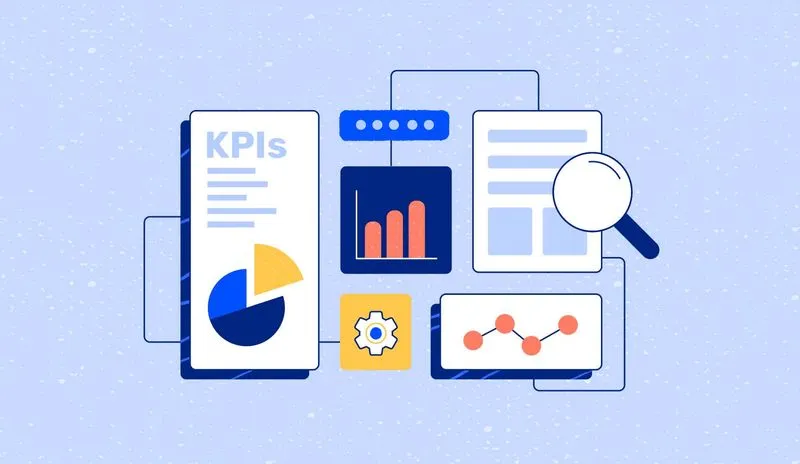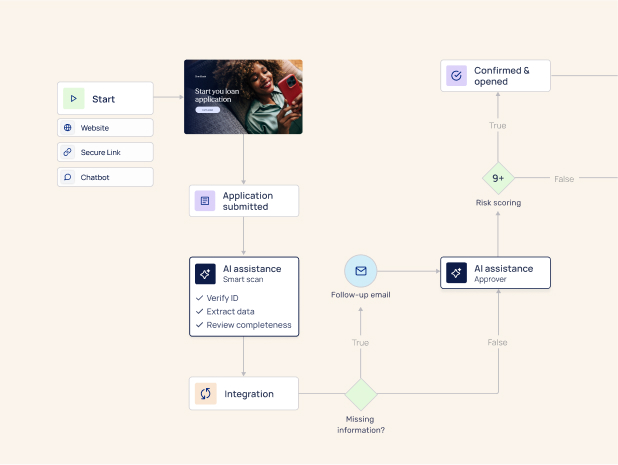The insurance industry has been undergoing a digital transformation in recent years, with a focus on improving customer experience and increasing efficiency. One of the most significant drivers of this transformation is the adoption of digital data collection methods.
The insurance policy sales process involves gathering highly sensitive information from customers, such as personal medical history or financial records. In the past, collecting customer data required a lengthy and manual process of collection, verification, and validation.
By collecting this data digitally, insurance companies can greatly reduce the time it takes to complete submissions and to quote and bind policies. It also provides a more comprehensive understanding of customer risk profiles, allowing insurers to better manage their portfolios and create tailored products for their clients.
But how can insurers measure the success of their digital data collection initiatives? While there are a variety of metrics that can be used, here are 10 key performance indicators (KPIs) for customer experience (CX) improvement driven by digital data collection:
- Average Time to Quote: Gauges the speed at which insurers generate policy quotes after customers submit their information. Digital data collection streamlines the process, enhancing efficiency and optimization to provide faster quotes.
- Average Time to Bind: Reveals the time needed to bind a policy once all necessary customer details are collected. The use of digital data collection expedites the process, allowing clients to secure coverage and enjoy its benefits quicker.
- Conversion Rate: Assesses the proportion of customers who finalize their policy submission and purchase coverage from an insurer. Digital data collection is driving sales by making the process more seamless for the customers.
- Customer Satisfaction Score: Captures customers' sentiment toward the entire policy acquisition journey, including the digital data collection phase. Digital data collection enhances the user experience by streamlining and personalizing interactions, resulting in higher overall satisfaction scores.
- Data Accuracy Rate: Evaluates the accuracy of customer data obtained through digital channels. Digital data collection automates the process, reducing human errors and ensuring that insurers can assess risk profiles more accurately and efficiently.
- Fraud Detection Rate: Quantifies the success of identifying fraud within digitally collected customer data, highlighting the insurer's ability to pinpoint fraudulent activities and safeguard clients from potential threats.
- Client Onboarding Speed: Determines the average duration required to onboard a customer once all necessary information is submitted, illustrating the insurer's efficiency in processing customer data and expediting policy purchases.
- Net Promoter Score (NPS): Measures customer loyalty and willingness to recommend the insurer’s services to others. It is a reflection of how well insurers are able to create positive experiences for their customers.
- First Contact Resolution (FCR): Tracks the percentage of customer queries and concerns resolved in a single interaction, signifying the insurer's customer service staff’s effectiveness in offering prompt solutions.
- Claim Processing Time: Calculates the average duration required to process a customer claim. Digital data collection methods allow insurers to access customer and policy information more quickly than traditional, paper-based methods. This faster access to data enables claims adjusters to begin processing claims without delays.
- Policy Renewal Rate: Monitors the frequency of policy renewals, reflecting the insurer's success in fostering positive relationships. Digital data collection processes enhance customer experiences, leading to increased loyalty, retention, and a higher frequency of policy renewals.
- Customer Acquisition Cost: Assesses the proportion of prospects who become customers, showcasing the insurer's ability to convert leads into actual clients and deliver a satisfying customer experience. Leveraging digital data collection streamlines the customer acquisition process, reducing associated costs and improving the return on investment.
- Average Handling Time (AHT): Estimates the mean time required to address customer queries and concerns, revealing how effectively insurers can manage their data collection process to ensure timely issue resolution.
- Policy Sales Growth: Evaluates the growth rate in policy sales. Digital data collection processes facilitate seamless interactions with customers, driving sales growth and boosting profitability.
- Data Security Compliance: Assesses the insurer's adherence to data security regulations and customer information protection, emphasizing their commitment to safeguarding digitally collected customer data. Implementing digital data collection processes with robust security measures ensures adherence to data security regulations and protection of customer information.
- Quote-to-Bind Ratio: Determines the rate at which customers proceed from obtaining a quote to purchasing a policy, illustrating the insurer's success in providing an efficient customer experience.
- Cross-Selling Rate: Gauges the frequency of upselling or cross-selling additional products to existing clients, indicating the insurer's ability to capitalize on existing customer base for revenue growth. Digital data collection provides insurers with valuable customer insights, allowing them to upsell or cross-sell additional products more effectively.
- Customer Effort Score (CES): This KPI measures the ease with which customers can purchase policies, file claims, and resolve inquiries using digital channels, reflecting the insurer's capability to streamline the customer experience. Digital channels simplify policy purchasing, claims filing, and query resolution, reducing customer effort and improving overall satisfaction.
- Self-service Usage Rate: This metric calculates the proportion of customers utilizing digital self-service platforms for insurance needs, demonstrating the insurer's success in creating an efficient customer journey
- Digital Adoption Rate: Tracks the willingness of clients to engage with insurers via digital channels, signifying the insurer's effectiveness in promoting digital adoption. By offering a seamless digital data collection process, insurers can effectively promote digital adoption among their customer base.
- Loss-Adjusted Expense Ratio: Measures the ratio of claim-related expenses to earned premiums, indicating the insurer's ability to manage digital data collection to minimize losses and optimize expense ratios. Efficient management of digital data collection allows insurers to minimize losses and optimize expense ratios by reducing claim-related expenses relative to earned premiums.

Leveraging Digital Data Collection to Boost Sales Growth and Optimize Customer Experience:
Digital data collection also enables insurers to capture more detailed information about each customer, which can be used to generate greater sales growth, optimize policy handling times, reduce customer effort scores through the customer journey in the following ways:
- Real-time data sharing: Digital data collection allows for immediate retrieval of customer information and risk factors. This enables insurers to generate quotes, issue policies, and resolve claims more quickly compared to traditional, paper-based methods, which often involve manual data entry and retrieval. Digital data collection facilitates real-time communication between the various parties involved, such as adjusters, policyholders, and service providers. This streamlined communication results in faster decision-making, shorter wait times, and quicker settlements.
- Automation and pre-filling of information:s Digital systems can automate the process of collecting and pre-filling customer information from various sources, such as previous policies or online forms. This reduces the time spent on manual data entry and helps in generating quotes faster.
- Advanced analytics and risk assessment: Digital data collection systems can leverage advanced analytics and machine learning algorithms to assess risk profiles more accurately and efficiently. This allows insurers to calculate premiums and generate quotes more quickly based on data-driven insights.
- Integration with third-party data sources: Digital data collection enables insurers to access and integrate information from external sources, such as credit reports, driving records, or property assessments, in real-time. This additional data helps create a more accurate risk profile, streamlining the quote generation process.
- Customization and personalization: Digital data collection allows for the creation of tailored insurance products based on individual customer needs and preferences. Insurers can generate personalized quotes more quickly by leveraging customer data and preferences collected through digital channels.
- Enhanced user experience: Digital data collection enables customers to request quotes through user-friendly online platforms or mobile apps. These digital channels often guide customers through the process step-by-step, ensuring they provide all necessary information in a clear and efficient manner, which contributes to faster quote generation.
- Improved efficiency: Digital data collection enhances efficiency in the customer journey, moving prospects from obtaining a quote to purchasing a policy more seamlessly.
- Capturing data in multiple formats: Digital data collection systems can capture and store a wide variety of information, such as photos, videos, and detailed notes about the policy. This comprehensive documentation helps adjusters make more informed decisions, reducing the need for follow-ups and additional information requests that can slow down policy processing.
Digital data collection is an essential component of a successful insurance business. By leveraging digital data collection processes in underwriting, policy sales, claims and customer service, insurance providers can ensure they are optimizing every aspect of their operations while delivering superior customer experiences that drive revenue and increase market share.





